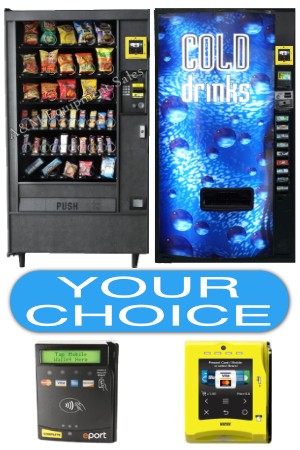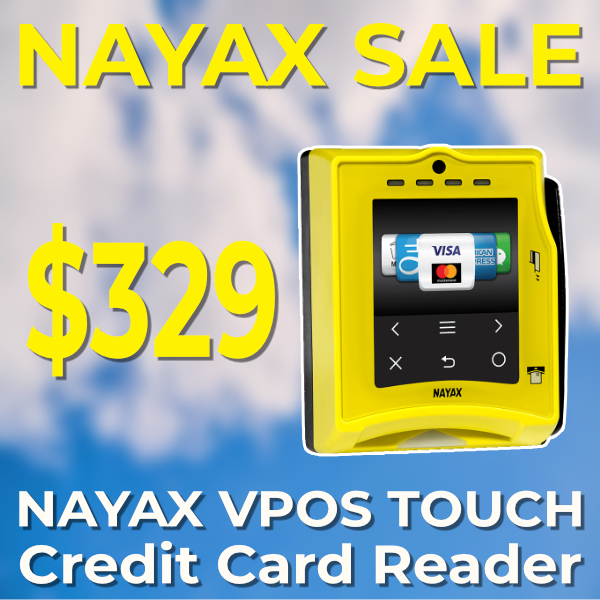Future Vending Technology ROI An interview with Mike Bunt, General Manager of Corporate Marketing Equipment of the Buffalo Rock Company
Future Vending Technology ROI The future of vending as it relates to sales and service is a topic that lots of vending operators are interested in but may not be able to evaluate from an operations point of view. Some of the hot topics today are healthy vending, interactive displays, campus id cards, mobile commerce, and micro markets. Have you evaluated any of these or similar opportunities in vending for Buffalo Rock?
“You must be careful on the new technology, we are, there’s a lot of it out there we call ‘foo foo’ technology that really is a marketing ploy today to those who like all the gadgets… but if it increases service calls, we have to be careful not to get overly involved with it.”
“We look at up front costs, then increased sales or decreased service calls and a lot of times it’s easier to come up with a decrease in cost of lifecycle than pin pointing an increase in service calls.”
Mike gives several examples of what he calls a win on technology, listen to the podcast:
EPISODE TRANSCRIPT:
Future Vending Technology ROI Tom Shivers: This is Tom Shivers with the Vending Business Show, here with Mike Bunt of Buffalo Rock, general manager of corporate marketing equipment of the Buffalo Rock Company. Thanks for being here, Mike.
Mike Bunt: You’re quite welcome.
Tom Shivers: Today we’re going to talk about the Future Vending Technology ROI and especially as it relates to sales and service because it’s kind of a popular topic today among vending operators, and sometimes it’s hard to evaluate from an operations point of view. Some of the hot topics today are healthy vending, interactive displays, campus ID cards, mobile commerce, and micromarkets. Have you evaluated any of those or similar opportunities in vending for Buffalo Rock?
Mike Bunt: Yes. Buffalo Rock is always looking at new technology. As a matter of fact, I attended the NACS trade show in Vegas and brought back six new pieces of equipment for testing. When we analyze equipment, we look at it from two points of views. One is the sales side and the other obviously is the service side of it. There’s all kind of new technology in the trade that is exciting. However, does it bring a value to the customer or to the company, and that’s what we have to look through.
Mike Bunt: For instance, LED lights. They claim to increase sales, which is a hard claim to back, but it does present the product in a much better light. However, we know LED lights last longer than the standard lighting and we know it’s going to reduce service calls, so the upfront cost of the LED is a no-brainer to us because we know we’re going to save service calls down the road.
Mike Bunt: And everybody must be careful on the new technology. We are, and there’s a lot of it out there what we call foo-foo technology that really is a marketing ploy to the youth today that likes all the gadgets and the gizmos, but if it increases service calls, we have to be careful not to get overly involved with it.
Tom Shivers: Yeah, for new vending technology, how do you go about weighing the cost versus benefits or say return on investment?
Mike Bunt: Well, we look at it from the standard ROI procedure. We look at the upfront cost and then we’ll look at increased sales or decreased service calls, and a lot of times like I say, it’s easier to come up with a decrease in cost of life cycle than pinpointing an increased service call. For instance, a few years ago everybody migrated to the electronic boards on equipment, and one of the things we noticed is that we were going to a lot of vending machines just to reboot the boards in the machines. Well, talking with the manufacturers, we convinced one, Vendo, to build a reboot chip if you will that basically just checks itself on all its boards, and if it senses a loss of connectivity, it reboots itself automatically. The boards that we were in test with, it drove service calls practically out of it for won’t take money calls, so that would be what we’d consider a win on technology. Now the consumer never sees it, but they enjoy the benefit of it because every time they go to the machine, they can buy a drink.
Mike Bunt: The interactive display boards, to me that’s more of a marketing ploy to the youth. It does draw excitement to your machines, but then you look at the cost of the doors versus the increased sales, and the placement potentials on those are very limited because you can’t just take an interactive vending machine and place it anywhere you have a vendor, so down the road, if we invest capital in equipment like that, we have to be very smart because you’re only going to be able to put in specific locations.
Tom Shivers: Are there any other examples that you have for evaluating vending technology?
Mike Bunt: We tested the [dex 00:04:52] project, where [dexing 00:04:56] was a huge technological win for Buffalo Rock is that you’re able to minimize routes on the streets, you increase sales, you reduce spoilage or outages of the machines, and that’s a huge cost to the company to get into [dexing 00:05:15] on 20,000 machines, but we know the payoff’s gonna be there through the efficiencies that the program’s gonna bring.
Mike Bunt: The MEI recycler, for instance. The big question is credit cards versus recyclers, and every machine that goes out into trade gets a changer and validator on it, so the upcost of the recycler, we have done tests on equipment where we put recyclers, and we’ve seen 30, 40, 50%. On a military base, we’ve seen 200% increases on machines for adding a component onto a machine that was already there operating, so that was a huge impact for us on sales, the return on investment was minimal, and it’s not like every machine doesn’t get a validator anyway.
Tom Shivers: Mm-hmm (affirmative). Well, it sounds like you’ve tested a number of products, perhaps several of the MEI products, and it sounds like the LED lights tend to pass the ROI test as well. Are there other features or ideas that are being touted today that make you wonder what the ROI might be for some of these?
Mike Bunt: Yeah. Right now, telemetry is a hot spot along with the interactive equipment, and the one challenge you have with telemetry is sales signal, and I don’t believe there’s anybody in this country that’s ever been on a cell phone that didn’t drop a call or it lock up. Well, that’s the same type of opportunities that you have when you put telemetry on your vendors. However, there’s a value to telemetry because it does allow you to preload your trucks, it can alert you for service calls, and I think once the technology is perfected and the calls droppage reduced, I think that you’ll see a lot more telemetry in the trade. You just have to weigh out the cost, the monthly fees versus the value of what you’re getting out of the system.
Tom Shivers: Mm-hmm (affirmative). Well, do the telemetry manufacturers allow for a testing period before making a decision?
Mike Bunt: Yeah, I would imagine they would. Again, that would be up to each company that’s selling the system, but like with most equipment, they’ll let you evaluate it and analyze it.
Tom Shivers: Well, thanks, Mike. Tell us about Buffalo Rock.
Mike Bunt: Well, we’re one of the largest privately owned Pepsi bottlers in the country. We have over 2000 employees and around 90,000 assets in the trade in Florida, Georgia, and Alabama.
Tom Shivers: You’ve been listening toFuture Vending Technology ROI at the Vending Business Show, a production of A&M Equipment Sales. More Vending Business Blogs USA Technology G10-S EPORT Telemeter & Credit Card Reader



